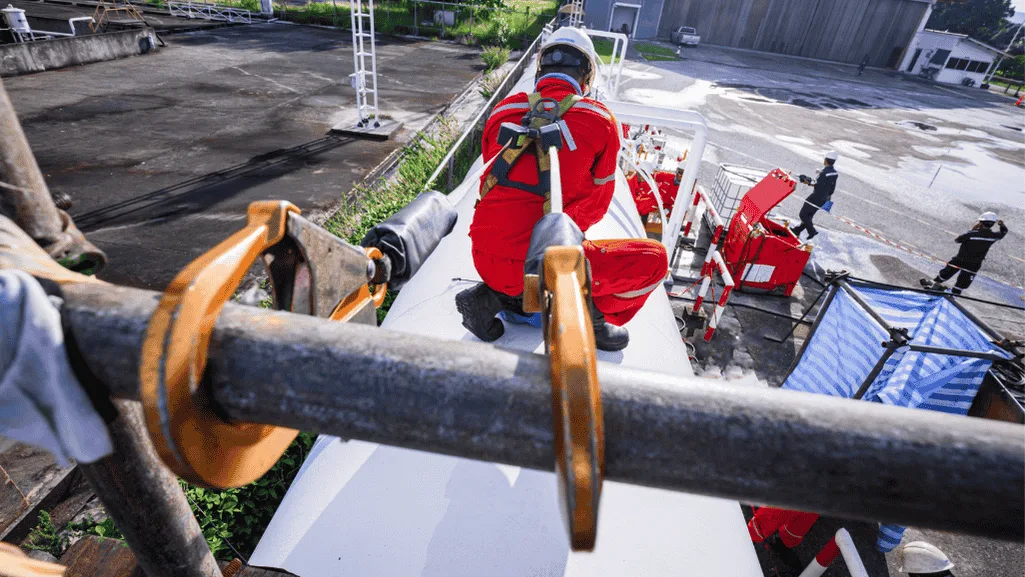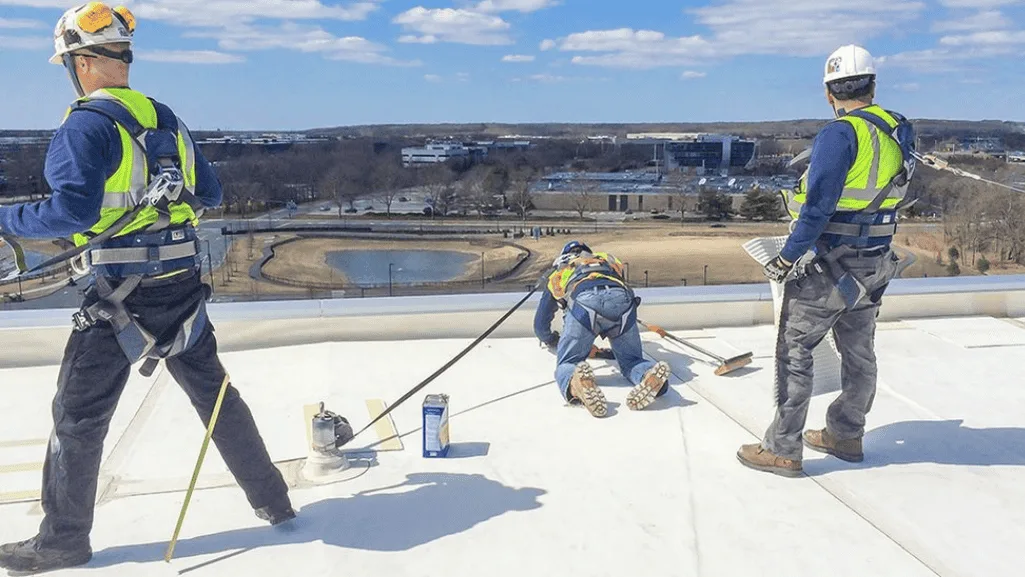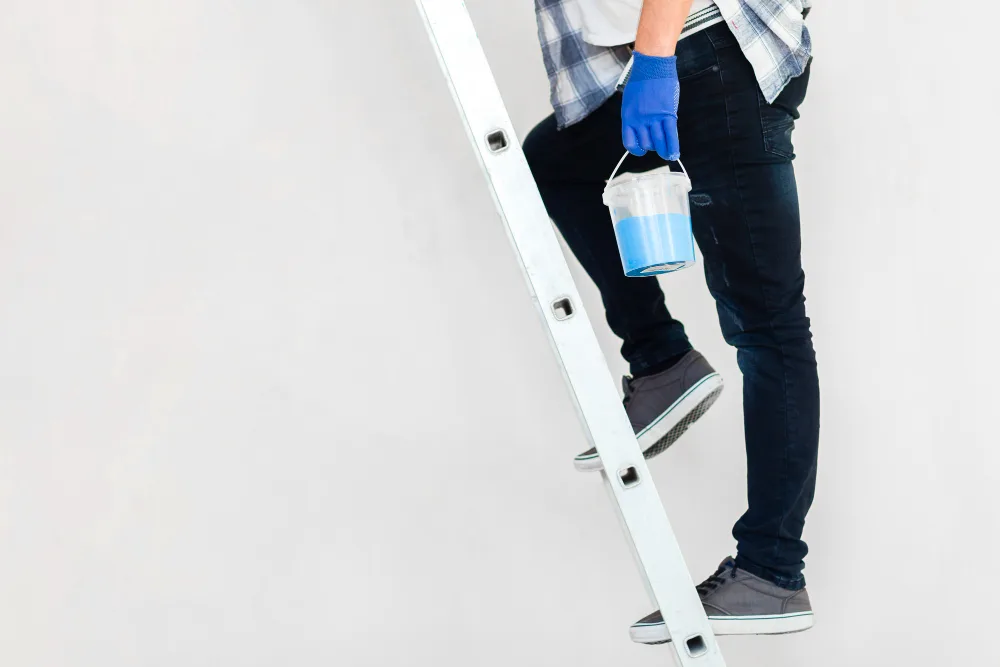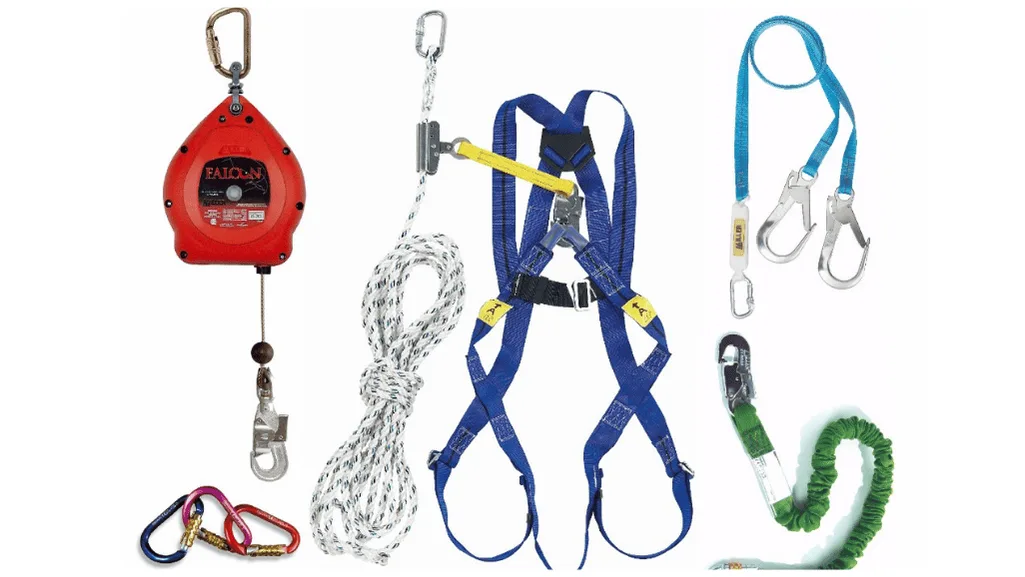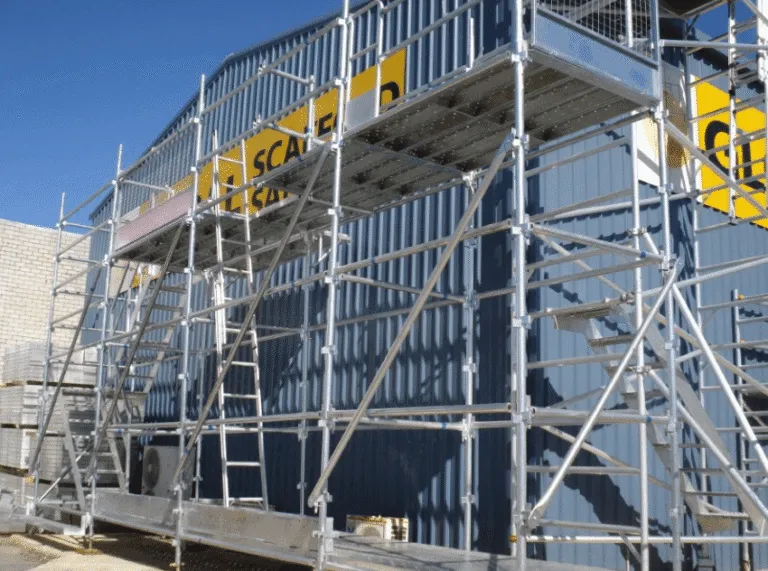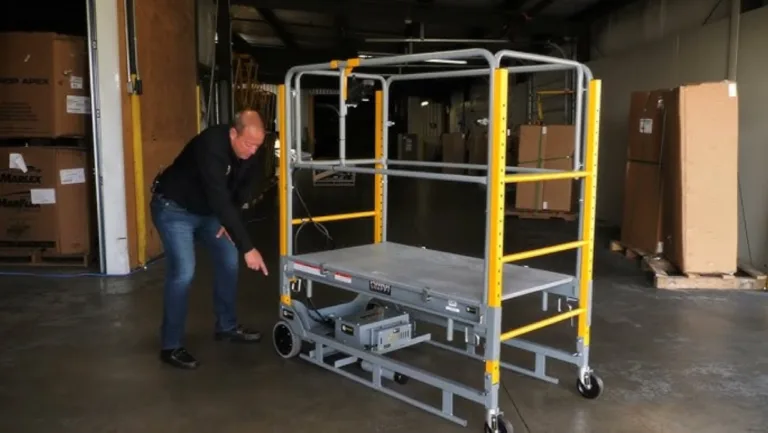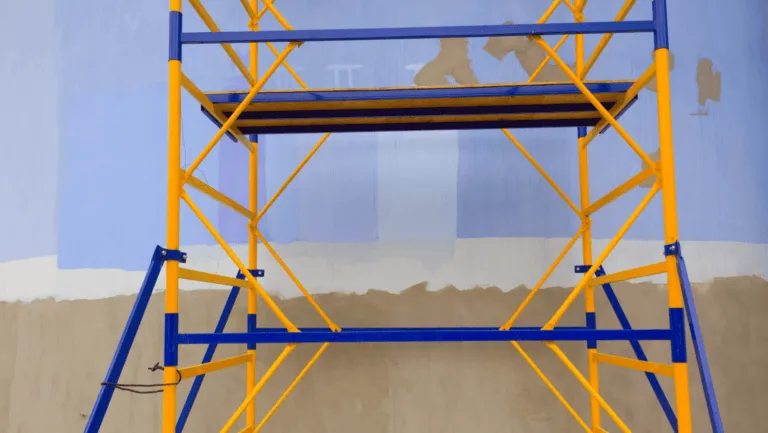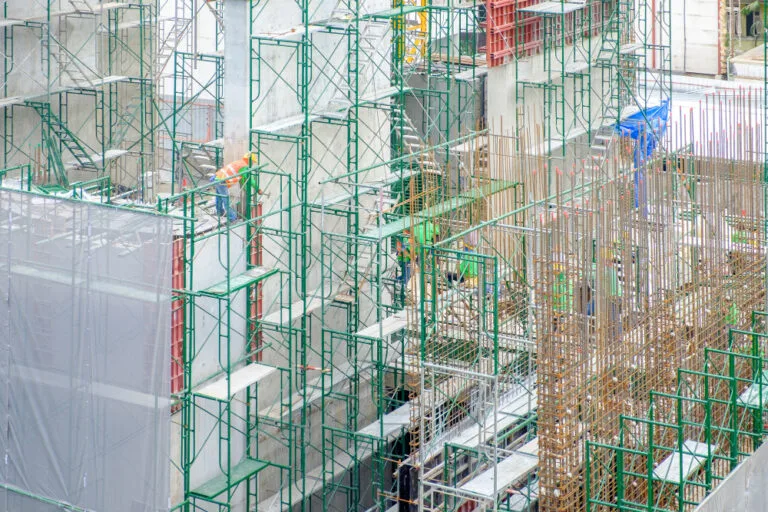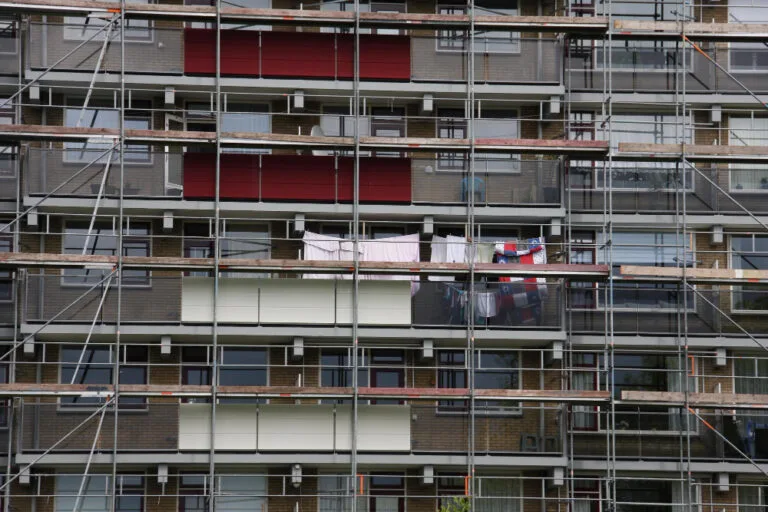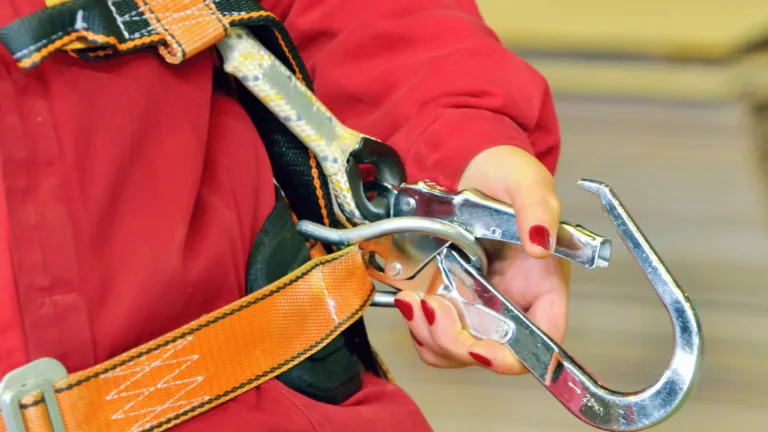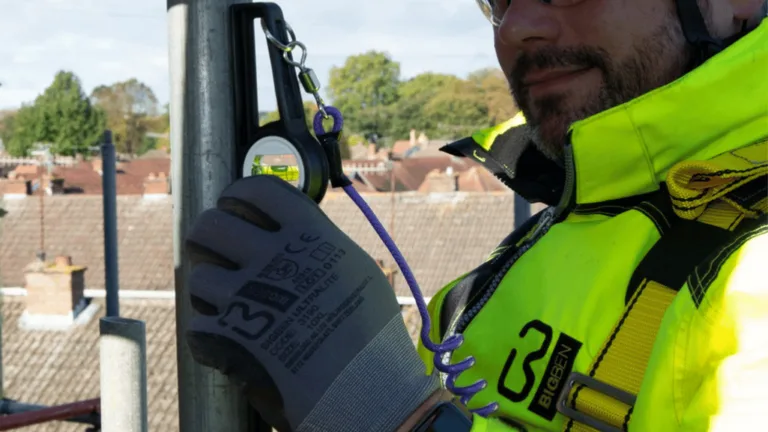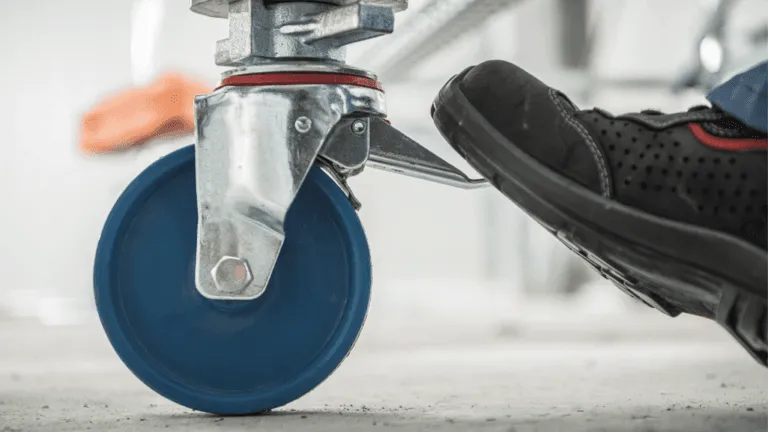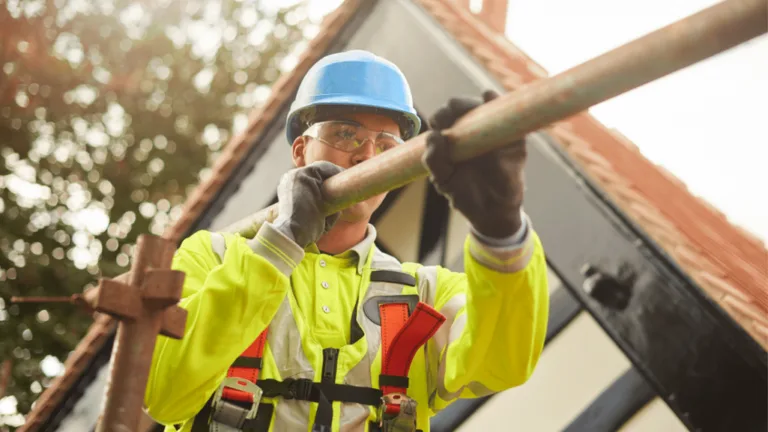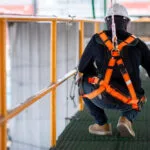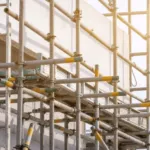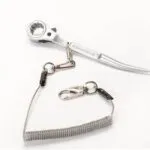Phone:
(+65)8319-0742
Working at height means doing a job where you could fall and get hurt. In general industry, the Occupational Safety and Health Administration (OSHA) says you need fall protection for any drop of 4 feet or more. The work at height standard gives important rules to keep you safe when you’re up high. This includes rules for fall protection systems, safety harnesses, elevated work platforms, and ladder safety.
Employers must make sure fall protection is a top priority. In 2018, almost 900 people died from falls at work, according to the Census of Fatal Occupational Injuries. Roofers, electrical workers, and iron/steelworkers were among those most at risk. It’s very important to follow the work at height standard to prevent injuries and save lives.
Key Takeaways
- Fall protection is required for height changes of 4 feet or more in general industry
- Employers must provide fall protection systems and equipment to mitigate risks
- Nearly 900 fatal falls occurred in 2018, highlighting the importance of fall protection
- Roofers, electrical workers, and iron/steelworkers face the highest risk of fatal falls
- Following the work at height standard is crucial for preventing injuries and fatalities
Understanding the Risks of Working at Height
Working at height is very dangerous and needs careful safety steps to avoid accidents. The Census of Fatal Occupational Injuries (CFOI) shows falls from height cause many deaths. In 2018, nearly 900 people died from these accidents. Construction, utilities, and industrial sectors are especially at risk.
Common Hazards Associated with Working at Height
Workers face many dangers when working high up. Some common fall hazards include:
- Unstable surfaces: Climbing ladders, walking on roofs, or working on scaffolding can be risky.
- Inadequate edge protection: Without enough edge protection, falls are more likely.
- Falling objects: Workers and people below can get hit by falling objects, from tools to building materials.
- Scaffolding collapse: Poor construction or damage can cause scaffolding to collapse, putting workers at risk.
Consequences of Falls from Height
Falls from height can lead to serious injuries or even death. Some possible outcomes include:
| Injury Type | Description |
|---|---|
| Fractures | Broken bones, especially in the limbs, spine, and skull |
| Head Injuries | Concussions, traumatic brain injuries, and skull fractures |
| Spinal Cord Injuries | Paralysis, loss of sensation, and motor function |
| Internal Injuries | Damage to internal organs, like the liver, spleen, or lungs |
To lower the risk of falls and injuries, employers must take action. They should train workers and provide the right safety gear. This includes securing ladders, using fall-arrest harnesses, and ensuring proper supervision by competent personnel. By focusing on safety and following guidelines, employers can greatly reduce fall hazards and protect their workers.
Key Components of the Work at Height Standard
The Work at Height Standard has several key parts. These parts help make workplaces safer for employees working high up. They include control measures, competent persons, and checking and keeping equipment in good shape.
Hierarchy of Control Measures
The hierarchy of control measures helps lower risks when working high up. It starts with the best safety steps, like removing the danger or using something safer instead. If that’s not possible, it uses barriers, nets, or safety systems to prevent falls.
It also includes training and safety rules, and personal protective gear. These are extra steps to keep workers safe.
Competent Person Requirements
Having skilled people is key to keeping workers safe high up. These people know how to spot dangers and use safety gear right. They make sure safety plans are followed and equipment is checked.
They must know the rules, like OSHA’s for construction and industry, and ANSI standards. This knowledge helps them do their job well.
Equipment Inspection and Maintenance
Checking and fixing safety gear is very important. Employers need to make sure this is done regularly. They should check gear before use, do detailed checks often, and have a yearly check by someone who knows what they’re doing.
If gear is broken, it must be fixed or thrown away right away. Keeping records of these checks is also important.
- OSHA says workers must use safety gear like guardrails or nets in certain situations.
- Workers need training on how to use safety gear and spot dangers.
- Construction sites have many dangers that need different safety steps.
- Safety gear must be checked often, and records of training and checks are important.
| Control Measure | Description |
|---|---|
| Elimination | Removing the hazard completely |
| Substitution | Replacing the hazard with a safer alternative |
| Engineering Controls | Implementing physical barriers or systems to prevent falls |
| Administrative Controls | Establishing safety procedures and providing training |
| Personal Protective Equipment | Using safety harnesses, lanyards, and other protective gear |
Following the hierarchy of control, having skilled people, and keeping equipment in good shape are key. They help make workplaces safer and create a culture of safety.
Fall Protection Systems and Equipment
To keep workers safe at height, it’s key to use the right fall protection systems and gear. These systems help prevent falls, catch them, or lessen their impact. The choice of system depends on the work setting, the task, and the height involved.
Personal Fall Arrest Systems (PFAS)
Personal fall arrest systems (PFAS) are a top choice for protecting workers. They include an anchor point, a full-body harness, and a connector like a lanyard. OSHA says PFAS need an anchor, a connector, and a harness to protect against falls.
When used right, PFAS can greatly lower the risk of serious injury or death from falls.
Guardrail Systems
Guardrails offer passive protection against falls and are often the best choice. They act as a barrier to stop workers from reaching dangerous edges. OSHA requires fall protection for workers at 4 feet or more, and guardrails are a good solution. Guardrails must meet OSHA standards and be checked often to stay safe.
Safety Net Systems
Safety nets catch falling workers to prevent them from hitting the ground or objects below. They’re set up below the work area and must absorb the impact of a fall. Safety nets are a good option when PFAS or guardrails aren’t practical. OSHA’s fall protection standards mandate fall prevention or fall protection systems for workers six feet or more above a lower level on construction sites, and safety nets help meet these rules.
Choosing the right fall protection systems depends on the work environment and tasks. Aerial lifts and elevated work platforms need different solutions than scaffolding or roofs. Employers must train workers on using and maintaining this equipment and check systems regularly.
“Falls are responsible for approximately 34% of fatalities in the construction industry, and in 2021, there were 244,000 non-fatal fall injuries resulting in days away from work.” – OSHA
| Industry | Height Requiring Fall Protection |
|---|---|
| General Industry | 4 feet |
| Construction | 6 feet |
| Shipyards | 5 feet |
| Long shoring Operations | 8 feet |
| Steel Erection | 15 feet |
By using the right fall protection systems and equipment, employers can greatly reduce fall-related injuries and deaths. Regular training, checks, and upkeep of these systems are key to keeping workers safe at height.
Proper Use and Inspection of Ladders
Ladders are key tools in many jobs, but they can cause accidents if not used right or checked often. OSHA says ladders must be checked “frequently” as per 29 CFR 1910.25(d)(1)(x). It’s best to check ladders before each use and more often after incidents to keep everyone safe. This ensures the best ladder safety.
When checking ladders, look at a few important things:
- Securely attached joints between side rails and rungs
- Smoothly operating moving parts
- Lubricated metal bearings
- Well-maintained safety feet
For metal ladders, check for loose parts. Wooden ladders should be checked for damage. Fiberglass or plastic ladders need to be checked for cracks and chips.
When using extension ladders, make sure they have enough overlap. Self-supporting step ladders need intact spreaders for safety. Always follow the maximum working loads, which vary based on the ladder’s duty rating.
| Duty Rating | Maximum Load |
|---|---|
| Light duty, type III | up to 200 pounds |
| Medium duty, type II | up to 225 pounds |
| Heavy duty, type I | up to 250 pounds |
| Heavy duty, type IA | up to 300 pounds |
| Heavy duty, type IAA | up to 375 pounds |
To avoid accidents, keep the load centered while climbing. Don’t overreach and always touch the ladder at three points. Ladders should only be used for their intended purpose and not in ways that could be dangerous.
Falls from high places are a big cause of death in construction, showing how important it is to follow safety rules when working up high.
There are online OSHA safety training courses to teach employees about ladder safety. These courses help reduce injuries and make workplaces safer. By focusing on ladder safety and following best practices, employers can lower the risk of accidents and keep their workers safe.
Scaffold Safety Guidelines
Scaffolding is used to access heights on construction sites. But, accidents can happen during setup, use, and teardown. Workers setting up scaffolds are especially at risk. Issues like structural problems, missing guardrails, and bad weather can cause hazards.
To keep workers safe, it’s key to follow strict guidelines for design, building, and checking scaffolds.
Scaffold Design and Construction
Scaffolds must be built to hold their own weight plus four times the load they’re meant for. Different types of scaffolds have their own height limits and rules.
- Wood frame/post scaffolds: 60 feet height limit
- Tube & coupler/tubular welded scaffolds: 125 feet height limit
Scaffolds over three stories or 36 feet need a permit. Also, scaffold planks must handle certain loads and spans.
| Scaffold Duty Rating | Maximum Intended Load (psf) | Permissible Span (ft) |
|---|---|---|
| Light Duty | 25 | 10 |
| Medium Duty | 50 | 8 |
| Heavy Duty | 75 | 7 |
Planks over 10 feet must show the max load they can handle. Since December 2, 2010, all lumber planks must meet certain standards before use.
Safe Access and Egress
It’s vital to have safe ways to get on and off scaffolds. Users must follow the maker’s rules and only use approved ways to access scaffolds. Guardrails and toeboards are needed to stop falls and falling objects.
When moving scaffolds, make sure casters are locked to avoid unwanted movement.
Scaffold Inspection and Tagging
Before each use, a skilled person should check scaffolds for hazards or defects. Lumber must be checked for damage, and any bad lumber should be taken out of service. A tagging system helps show the scaffold’s inspection status and load limit.
Lean-to or jack scaffolds, shore scaffolds, nailed brackets, loose objects like bricks or blocks, and stilts are prohibited as working platforms.
By following these safety rules and training workers on hazards and load limits, employers can lower the risk of accidents. This makes working at heights safer for everyone.
Aerial Lift and Elevated Work Platform Safety
Aerial lifts and elevated work platforms are key for many industries. They let workers safely do tasks at heights. But, they can be dangerous if not used right. It’s important to follow strict safety rules and the latest standards, like the updated ANSI A92 standards from March 2019.
The new ANSI A92 standards bring big changes. They now call these platforms Mobile Elevating Work Platforms (MEWPs). MEWPs are divided into two groups and three types. They also have new design standards, like Platform Load Sense System and Dynamic Terrain Sensing. Employers need to know these changes to keep their workplaces safe.
Operator Training and Certification
Operator training and certification are key to safety. The updated A92.24 standards require employers to teach operators about MEWPs. This includes how to choose the right MEWP, safety rules, and how to prevent falls.
Operators must know how to use the MEWP they’ll be working with. They need to understand the machine’s limits, emergency steps, and how to check it daily. After training, they get a certification card.
Pre-use Inspections and Maintenance
Checking aerial lifts and elevated work platforms before use is crucial. Operators should look for damage, leaks, or problems. They should check tires, fluid levels, battery, and more.
- Tires and wheels
- Fluid levels (hydraulic oil, fuel, etc.)
- Battery and charger
- Guardrails and gates
- Control panel and emergency stop button
- Boom and scissor mechanisms
- Safety decals and warning labels
MEWPs also need regular maintenance and servicing. This should follow the manufacturer’s advice and ANSI/CSA standards. People who work on these machines need training. Keeping records of inspections and maintenance is important for safety.
“Making aerial lift safety a priority is not just a law – it’s a moral duty. By focusing on training, inspections, and maintenance, employers can keep workers safe, reduce downtime, and build a safe work culture.”
Roofing Work and Edge Protection
Roofing work is risky, and edge protection is key for safety. OSHA says employers must protect roofers at heights over six feet. They must use guardrails, safety nets, or personal fall arrest systems (PFAS).
For heights between 6 and 15 feet, non-penetrating guardrails or removable handrails are good. At heights over 15 feet, employers must use more advanced systems like mobile 360 guardrails or safety nets.
OSHA also requires specific Personal Protective Equipment (PPE) for roofers. This includes hard hats, eye protection, hearing protection, gloves, and non-slip footwear.
- Hard hats
- Eye protection
- Hearing protection
- Gloves
- Non-slip footwear
If fall restraint systems are not possible, workers must use personal fall arrest systems (PFAS). Employers should also use safety monitors and warning line systems. A warning line at 6 feet is needed to signal danger.
A recent study reported that 20% of construction and roofing fatalities come from falls, highlighting the importance of rooftop and ladder safety in the workplace.
Employers don’t need to provide fall protection for short, temporary work over 15 feet. But, they must enforce a rule to keep employees 15 feet away without protection. Following OSHA’s 1910 standard can prevent 29 deaths and 5,842 injuries each year. This shows how crucial edge protection and roofing safety are.
Confined Space Entry and Rescue Planning
Working at height in places like tanks or manholes is risky. It’s important to know the dangers and take safety steps. OSHA says a confined space is big enough for people to enter but has few ways in or out. Employers must check these spaces to see if they need special safety rules. They also need to use the right scaffold types for safe access.
Identifying and Evaluating Confined Spaces
The first step is to find and check the confined spaces at work. This means looking for dangers like bad air or being trapped. Gas monitors might be needed to keep the air safe.
After finding these spaces, employers must decide if they need extra safety rules. This is because some spaces are more dangerous than others.
Permit-required Confined Space Entry Procedures
When entering a very dangerous space, strict rules must be followed. These include using good air, watching the air, and talking clearly. OSHA says workers must wear a full body harness to stay safe.
They also need to use a special lifeline to catch them if they fall. Employers must teach workers how to use this gear and check it often.
Emergency Response and Rescue Planning
Having a plan for emergencies is key when working in confined spaces. Employers need a detailed plan for what to do in an emergency. This plan should include how to rescue someone quickly.
A rescue tripod with special gear is often used for rescues. It’s placed near the entrance and has a winch for pulling people out. Trained teams might be needed for these rescues, making sure help comes fast.

